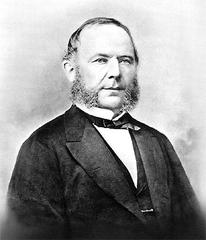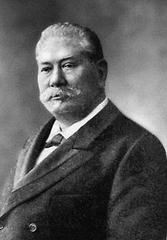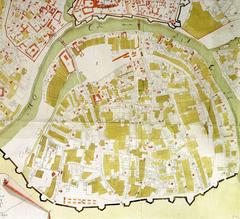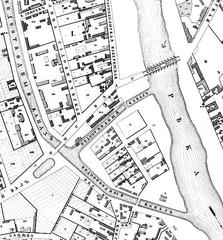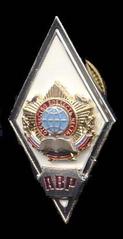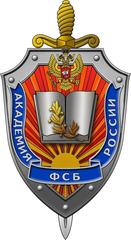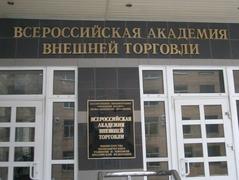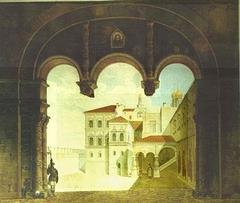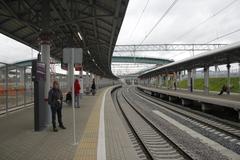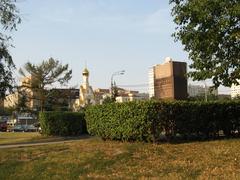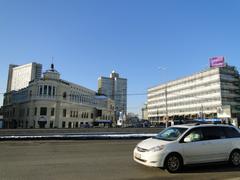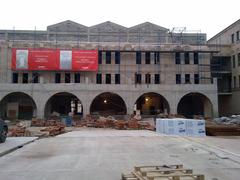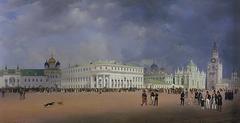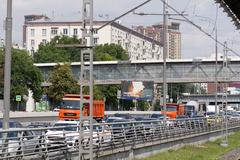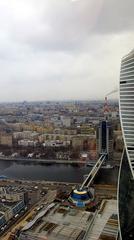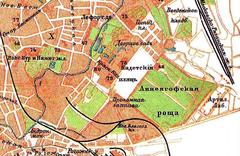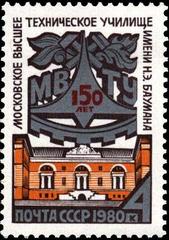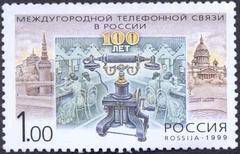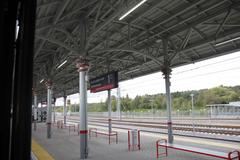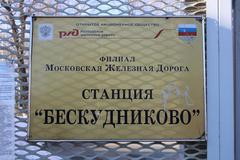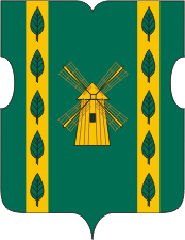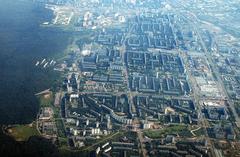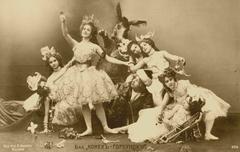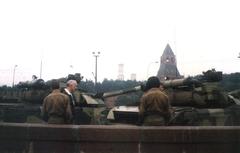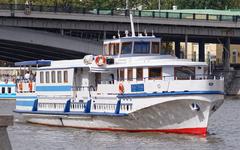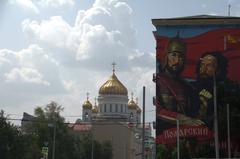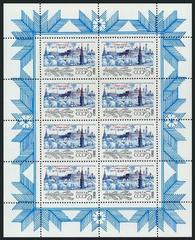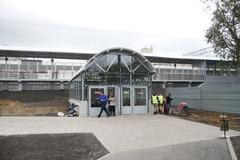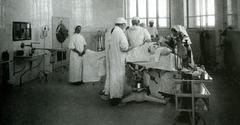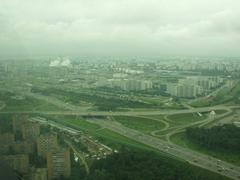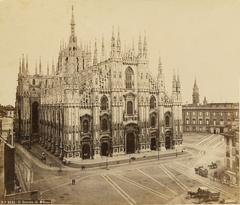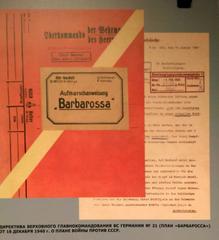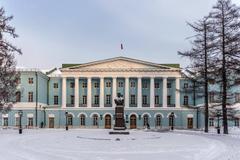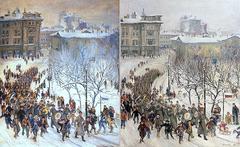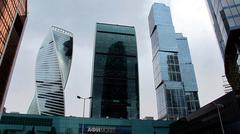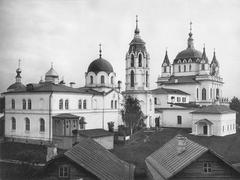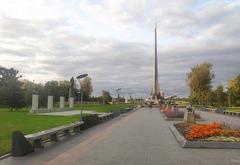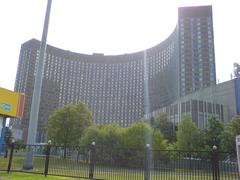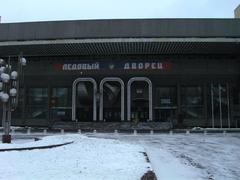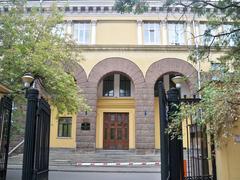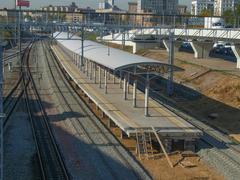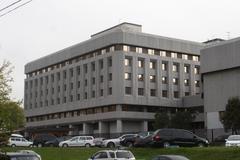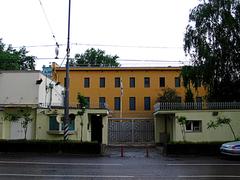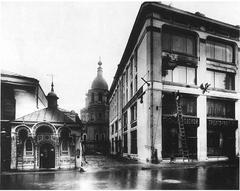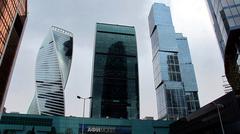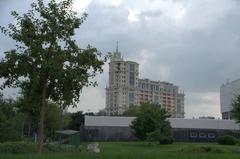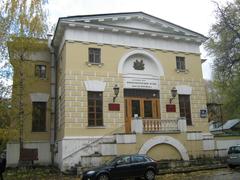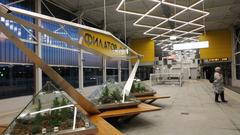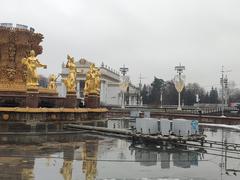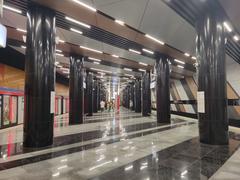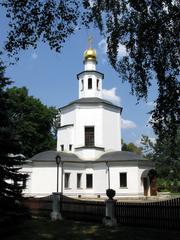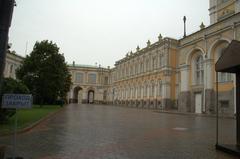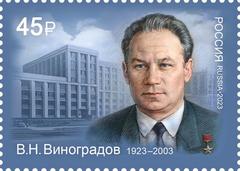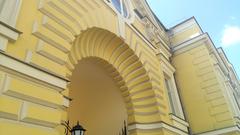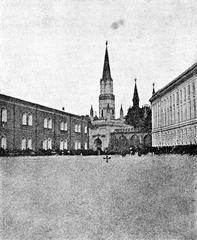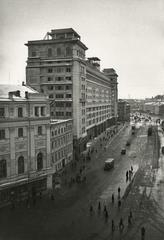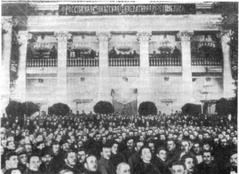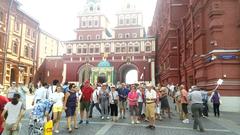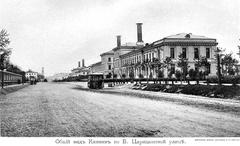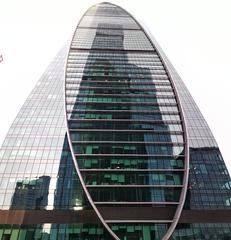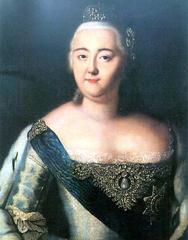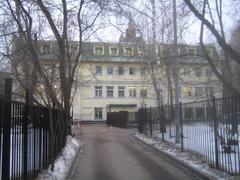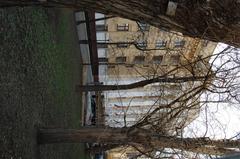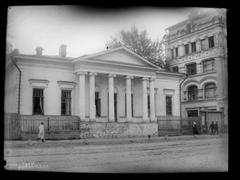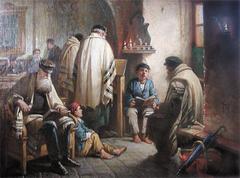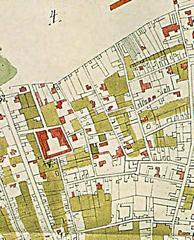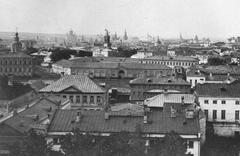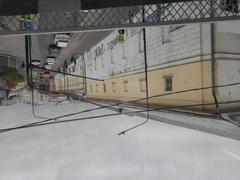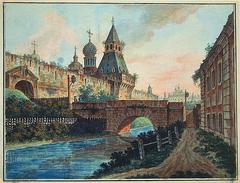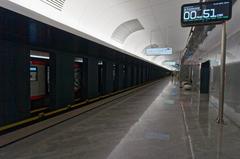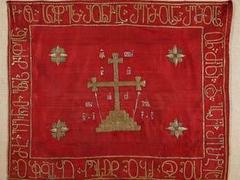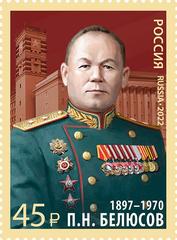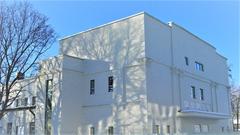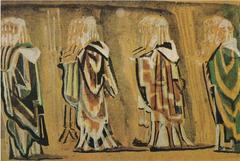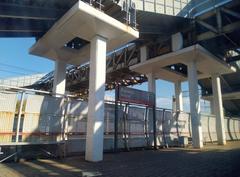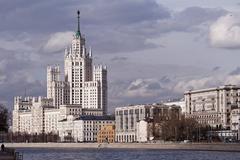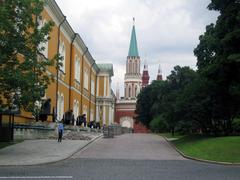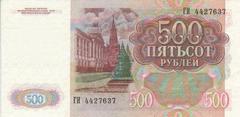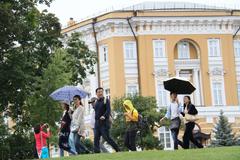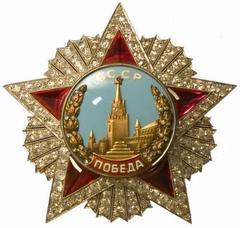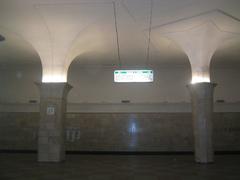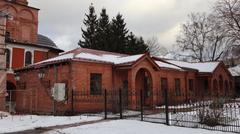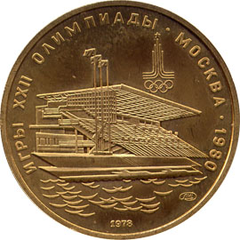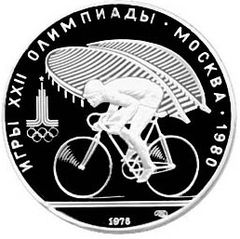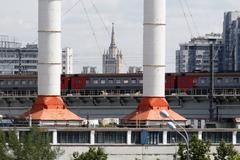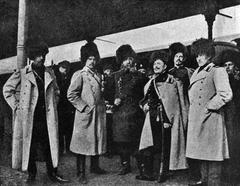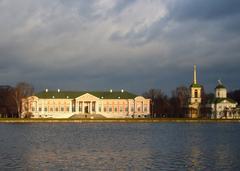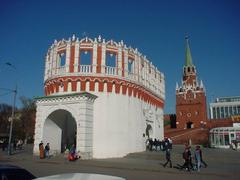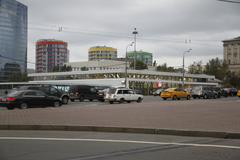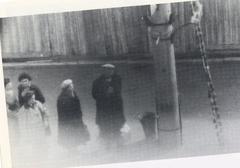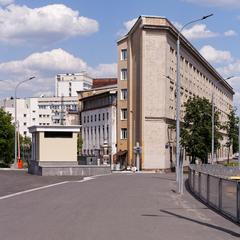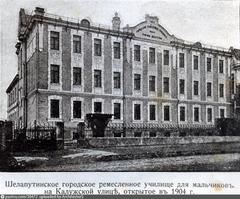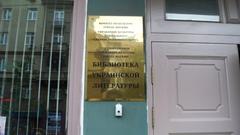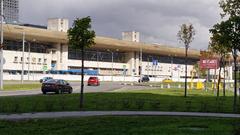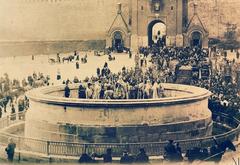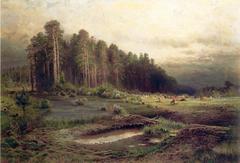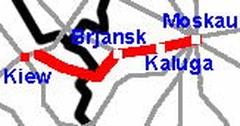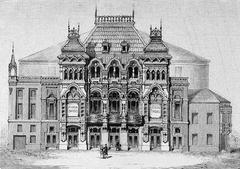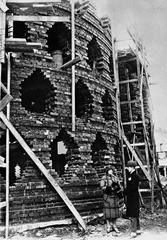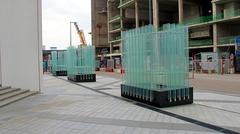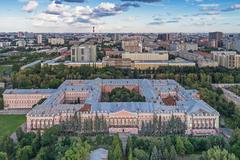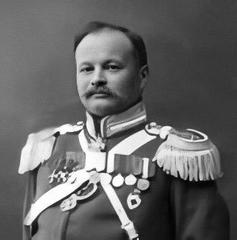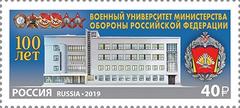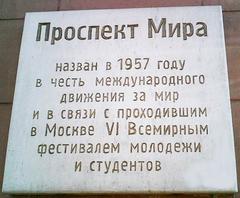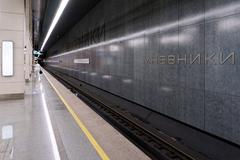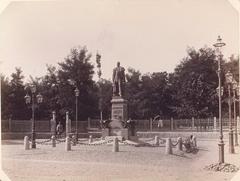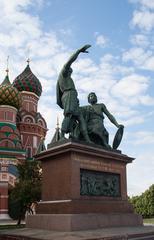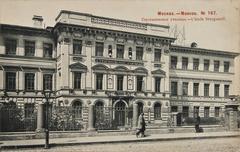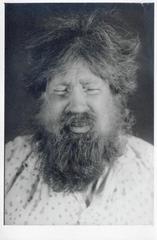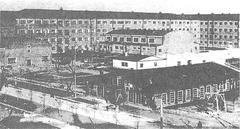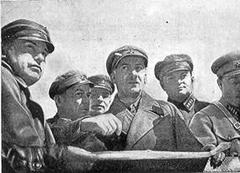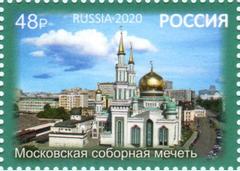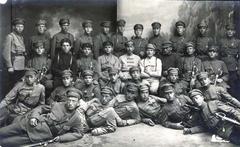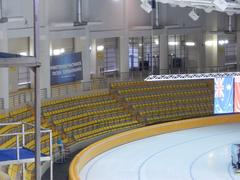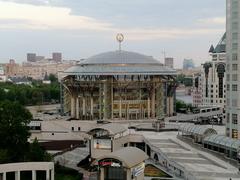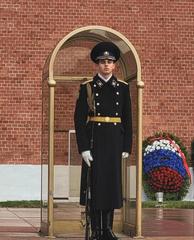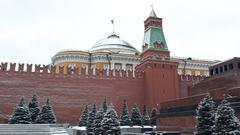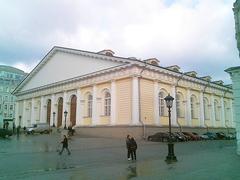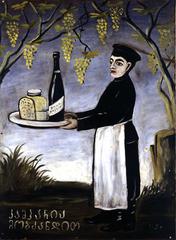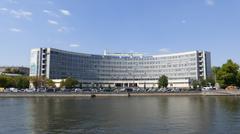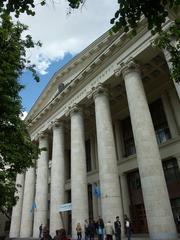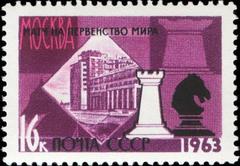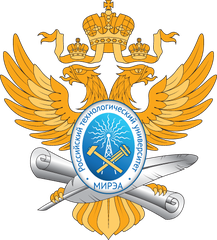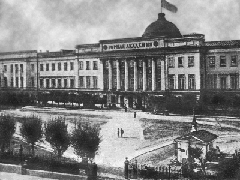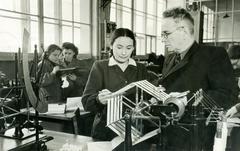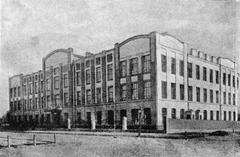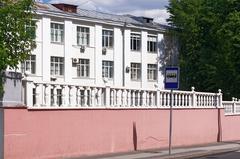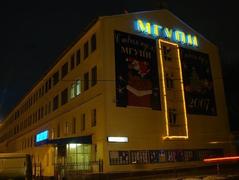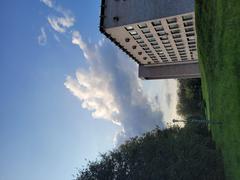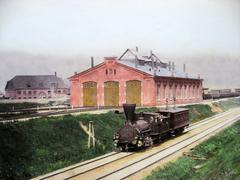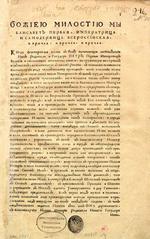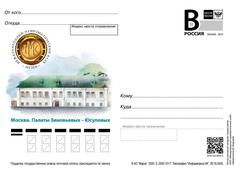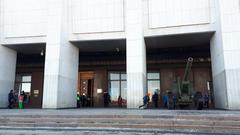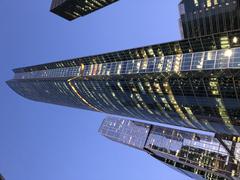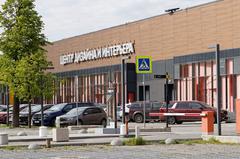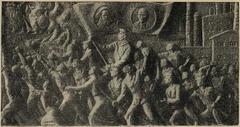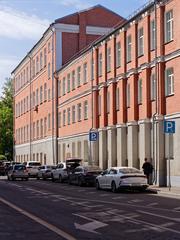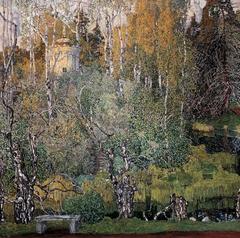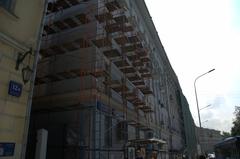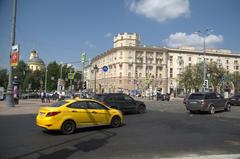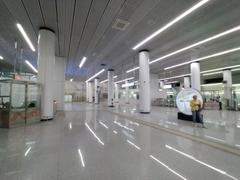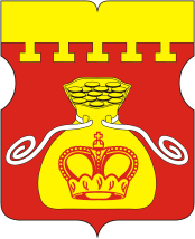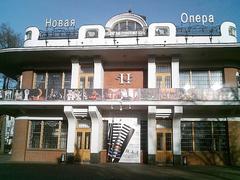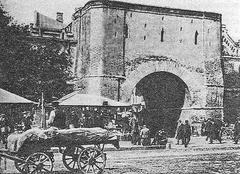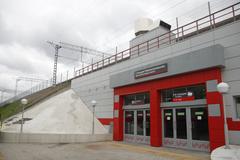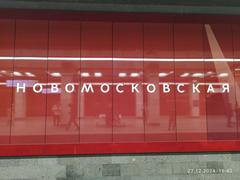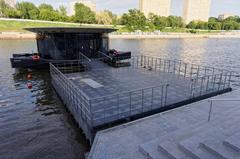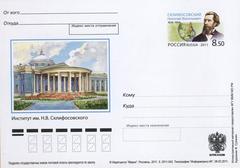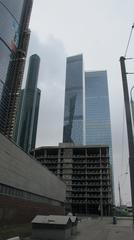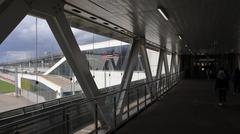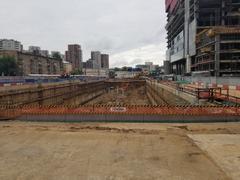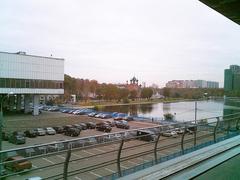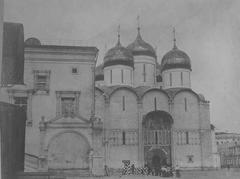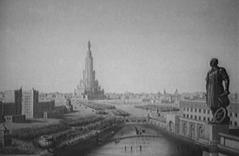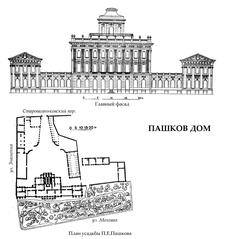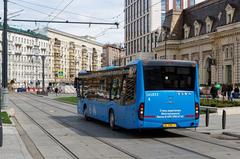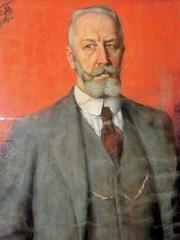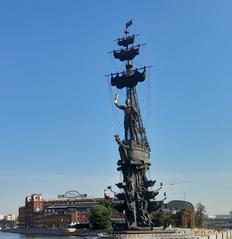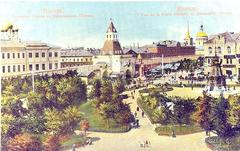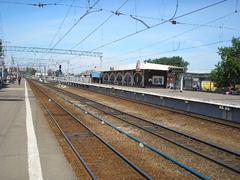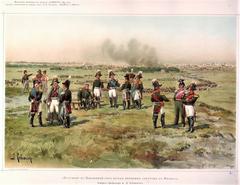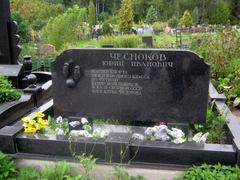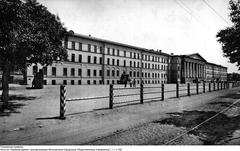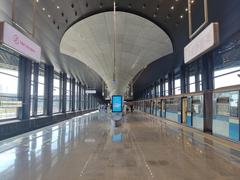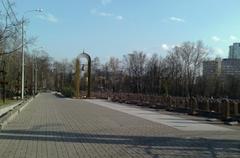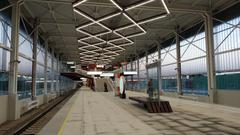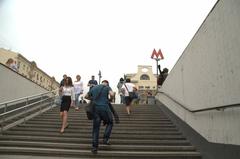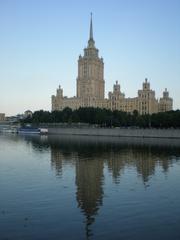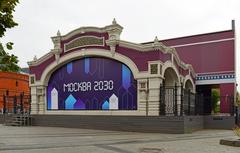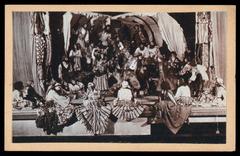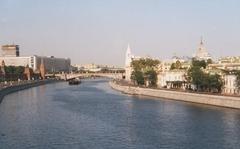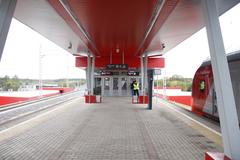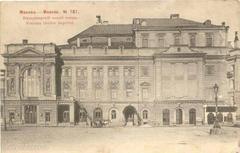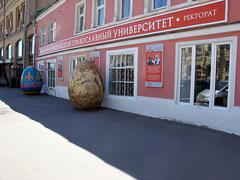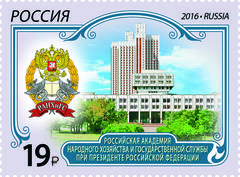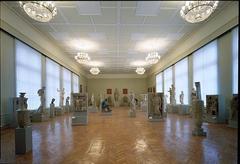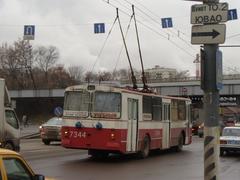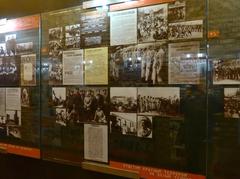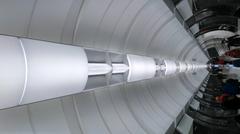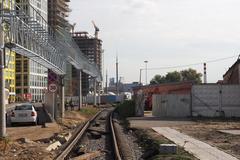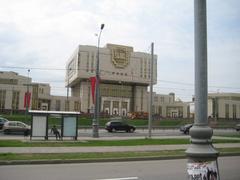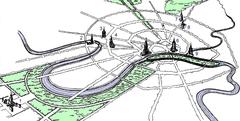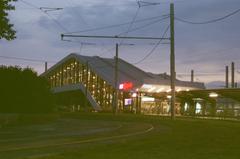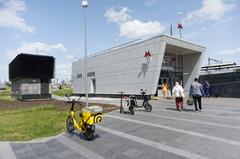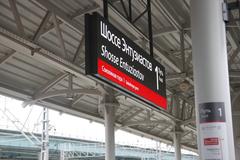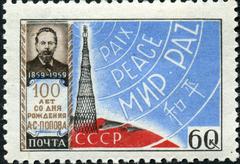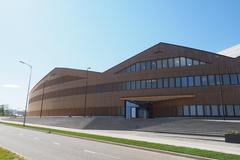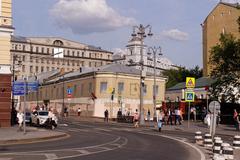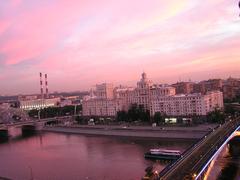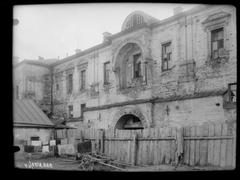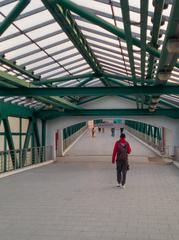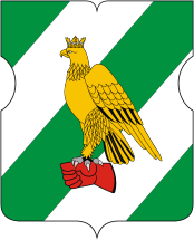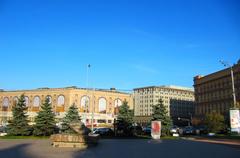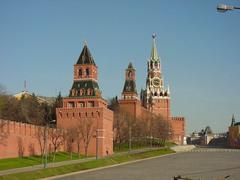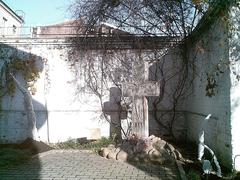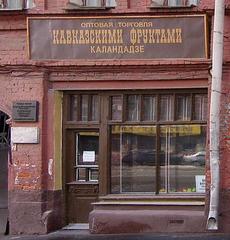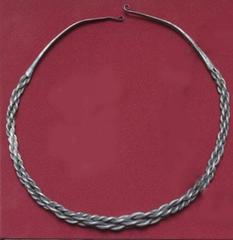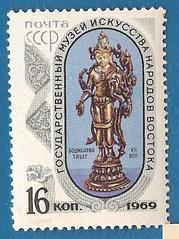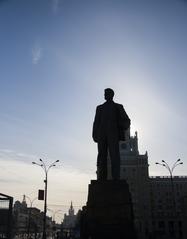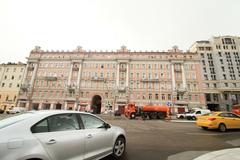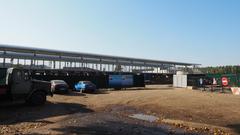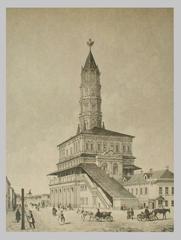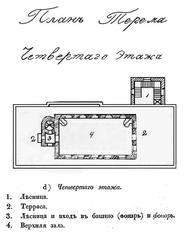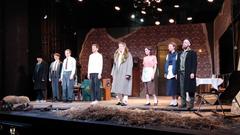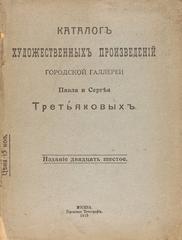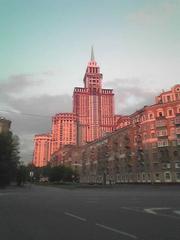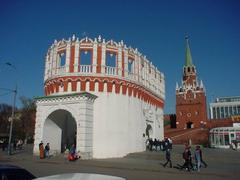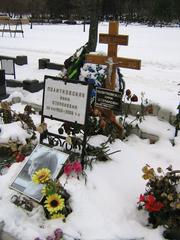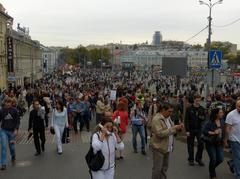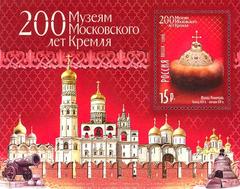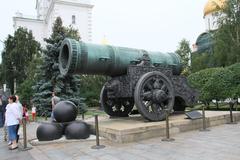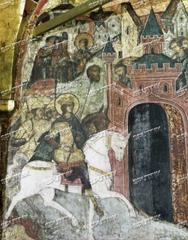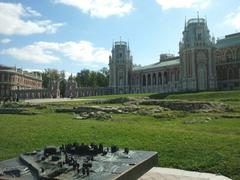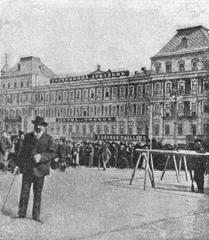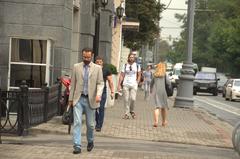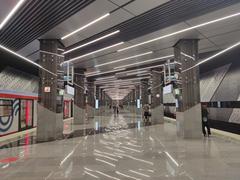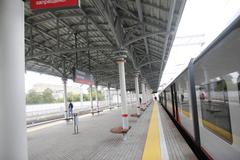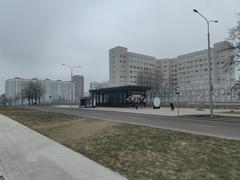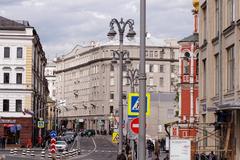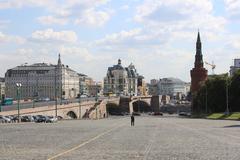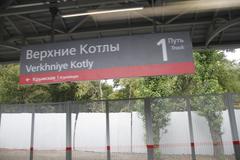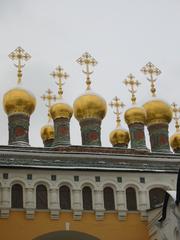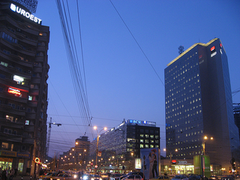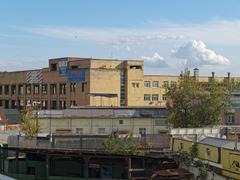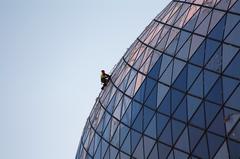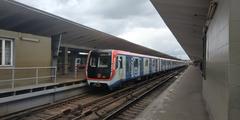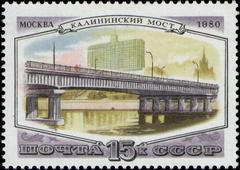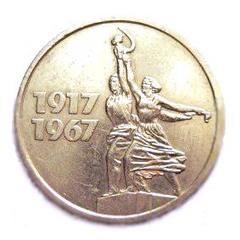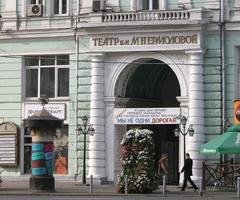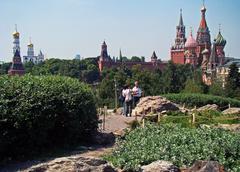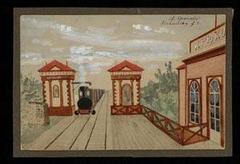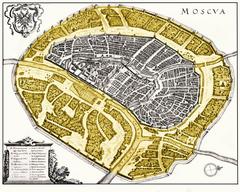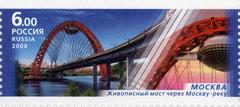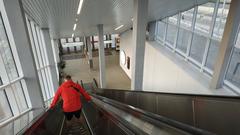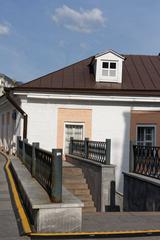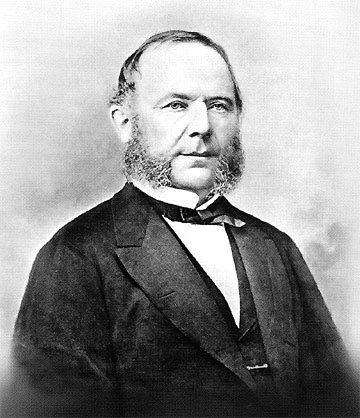
Visiting Chugunny Bridge in Moscow: Hours, Tickets, and Tips
Date: 20/07/2024
Introduction
The Чугунный мост, or Chugunny Bridge, is a historic and architectural marvel located in Moscow, Russia. Constructed in the early 19th century, this bridge stands as a testament to the era’s engineering ingenuity and the rapid industrialization that characterized Russia at the time. Designed by prominent engineers such as Augustin Betancourt and Wilhelm von Traitteur, the bridge was among the first in Russia to utilize cast iron extensively, showcasing the material’s strength and versatility (Moscow Bridges). Its construction was completed between 1823 and 1826, during a period marked by significant technological advancements and the influence of neoclassical architectural styles (Architectural Digest). The bridge spans the Yauza River and features intricate decorative elements, including floral motifs and geometric patterns that highlight the aesthetic potential of cast iron. Over the years, Чугунный мост has not only facilitated transportation and trade but has also become a cultural landmark, appearing in literature, art, and photography. Today, it remains a vital part of Moscow’s infrastructure and a cherished symbol of the city’s rich architectural heritage (Russian History).
Table of Contents
- [Early Conception and Construction](#early-conception-and-constructionearly-conception-and-construction)
- [Architectural Significance](#architectural-significancearchitectural-significance)
- [Historical Events and Renovations](#historical-events-and-renovationshistorical-events-and-renovations)
- [Visitor Information](#visitor-informationvisitor-information)
- [Visiting Hours](#visiting-hoursvisiting-hours)
- [Tickets and Guided Tours](#tickets-and-guided-tourstickets-and-guided-tours)
- [Accessibility](#accessibilityaccessibility)
- [Nearby Attractions](#nearby-attractionsnearby-attractions)
- [Cultural and Social Impact](#cultural-and-social-impactcultural-and-social-impact)
- [Preservation and Modern-Day Relevance](#preservation-and-modern-day-relevancepreservation-and-modern-day-relevance)
- [FAQ](#faqfaq)
- [Conclusion](#conclusionconclusion)
- [Call to Action](#call-to-actioncall-to-action)
- [References](#referencesreferences)
Early Conception and Construction
The Чугунный мост, also known as the Cast Iron Bridge, is a significant historical structure in Moscow, Russia. Its conception dates back to the early 19th century, a period marked by rapid industrialization and architectural innovation in Russia. The bridge was designed by the renowned engineer and architect, Augustin Betancourt, who was instrumental in introducing advanced engineering techniques to Russian infrastructure projects.
Construction of the Чугунный мост began in 1823 and was completed in 1826. The bridge was one of the first in Russia to be constructed using cast iron, a material that was gaining popularity in Europe for its durability and strength. The use of cast iron allowed for more intricate and decorative designs, which were not possible with traditional stone or wood. The bridge’s design featured elegant arches and ornate railings, showcasing the aesthetic potential of cast iron.
Architectural Significance
The Чугунный мост is an exemplary model of early 19th-century engineering and architecture. Its construction marked a significant departure from the traditional methods used in Russian bridge-building. The bridge’s cast iron components were prefabricated and assembled on-site, a technique that was innovative at the time. This method not only reduced construction time but also ensured a higher level of precision and uniformity in the bridge’s structure.
The bridge’s design was influenced by the neoclassical architectural style, which was prevalent in Europe during the early 19th century. The neoclassical style emphasized symmetry, proportion, and the use of classical elements such as columns and arches. The Чугунный мост incorporated these elements, with its graceful arches and decorative railings reflecting the elegance and grandeur of neoclassical design.
Historical Events and Renovations
Throughout its history, the Чугунный мост has witnessed numerous historical events and undergone several renovations. During the 19th century, the bridge played a crucial role in facilitating transportation and trade within Moscow. It connected important commercial districts and allowed for the efficient movement of goods and people across the city.
In the early 20th century, the bridge underwent its first major renovation. The rapid industrialization and urbanization of Moscow necessitated the reinforcement and expansion of the city’s infrastructure. The Чугунный мост was strengthened to accommodate the increasing traffic and heavier loads. This renovation preserved the bridge’s original design while enhancing its structural integrity.
During World War II, the Чугунный мост suffered damage from bombings and military operations. Despite the destruction, the bridge remained a vital transportation link for the city. After the war, extensive repairs were carried out to restore the bridge to its former glory. The restoration efforts focused on preserving the historical and architectural significance of the bridge while incorporating modern engineering techniques to ensure its longevity.
Visitor Information
Visiting Hours
The Чугунный мост is accessible to visitors 24 hours a day, seven days a week. However, the best time to visit is during daylight hours to fully appreciate its architectural beauty and historical significance.
Tickets and Guided Tours
Visiting the Чугунный мост is free of charge. For those interested in guided tours, several local tour operators offer historical tours of Moscow that include a visit to the bridge. These tours provide in-depth information about the bridge’s history, architecture, and cultural significance.
Accessibility
The Чугунный мост is accessible to both pedestrians and vehicles. The bridge is equipped with pedestrian walkways, making it easy for visitors to explore and take photographs. It is also wheelchair accessible, ensuring that everyone can enjoy its historical and architectural beauty.
Nearby Attractions
The Чугунный мост is located in a vibrant area of Moscow, surrounded by several other historical and cultural sites. Nearby attractions include:
- Kremlin and Red Square - A short distance from the bridge, these iconic landmarks are must-visit sites in Moscow.
- Tretyakov Gallery - An art museum housing an extensive collection of Russian fine art.
- Gorky Park - A popular park offering various recreational activities and beautiful landscapes.
Cultural and Social Impact
The Чугунный мост has not only been a functional piece of infrastructure but also a cultural and social landmark in Moscow. Over the years, it has become a symbol of the city’s resilience and architectural heritage. The bridge has been featured in numerous works of art, literature, and photography, capturing the imagination of artists and writers.
One of the most notable cultural references to the Чугунный мост is found in the works of Russian author Mikhail Bulgakov. In his novel “The Master and Margarita,” the bridge is mentioned as a significant location, adding to its mystique and cultural importance. The bridge’s picturesque setting and historical significance have made it a popular subject for photographers and artists, who seek to capture its timeless beauty.
Preservation and Modern-Day Relevance
In recent years, efforts have been made to preserve the Чугунный мост and ensure its continued relevance in modern-day Moscow. The bridge is now a protected historical monument, and any renovations or repairs are carried out with the utmost care to maintain its original design and structural integrity.
The Чугунный мост continues to serve as a vital transportation link in Moscow, accommodating both vehicular and pedestrian traffic. Its historical and architectural significance attracts tourists and history enthusiasts from around the world. The bridge’s preservation is a testament to Moscow’s commitment to honoring its architectural heritage while adapting to the needs of a modern city.
FAQ
Q - What are the visiting hours of Чугунный мост?
A - The Чугунный мост is accessible 24 hours a day, seven days a week.
Q - How much do tickets to Чугунный мост cost?
A - Visiting the Чугунный мост is free of charge.
Q - Is the Чугунный мост wheelchair accessible?
A - Yes, the Чугунный мост is wheelchair accessible.
Q - Are there guided tours available for Чугунный мост?
A - Yes, several local tour operators offer guided tours that include a visit to the Чугунный мост.
Conclusion
In conclusion, the Чугунный мост is more than just a bridge; it is a symbol of Moscow’s rich historical and architectural legacy. Its innovative use of cast iron, elegant neoclassical design, and historical significance make it a key landmark in Moscow. The bridge has witnessed numerous historical events and undergone several renovations, each time emerging stronger and more resilient. Its preservation efforts underscore Moscow’s commitment to maintaining its cultural heritage while adapting to the needs of a modern city. As visitors walk across the Чугунный мост, they not only traverse a physical structure but also connect with a piece of Moscow’s storied past. This bridge continues to inspire and attract tourists and history enthusiasts from around the world, making it an enduring symbol of the city’s architectural prowess and enduring spirit (Moscow Heritage).
Call to Action
For more information about Moscow’s historical sites and travel tips, download the Audiala mobile app, check out our other related posts, and follow us on social media for the latest updates.
References
- Чугунный мост - History, Visiting Hours, Tickets, and More, 2024, Author Moscow Bridges
- Exploring Чугунный мост - Visiting Hours, Tickets, and Architectural Significance, 2024, Author Architectural Digest
- Exploring the Chugunny Bridge in Moscow - History, Significance, and Visitor Information, 2024, Author Russian History
- Exploring the Chugunny Bridge in Moscow - History, Significance, and Visitor Information, 2024, Author Moscow Heritage
